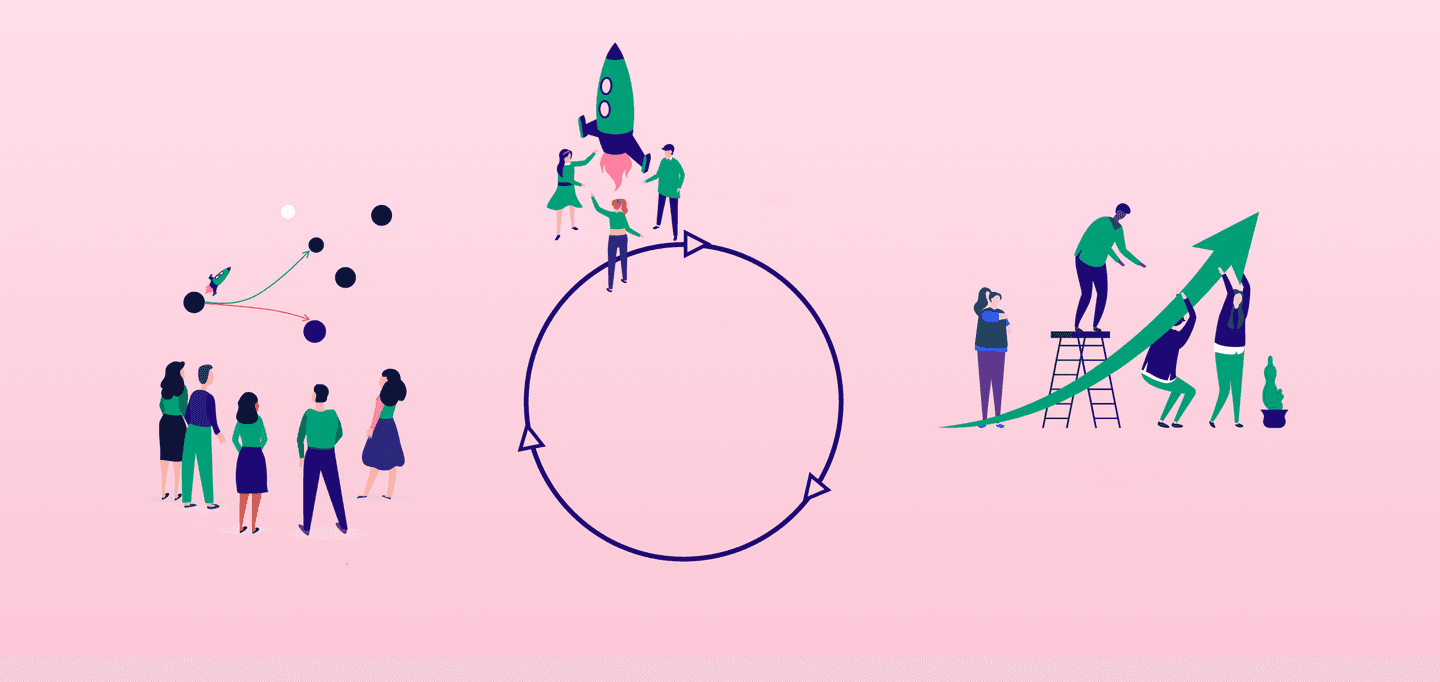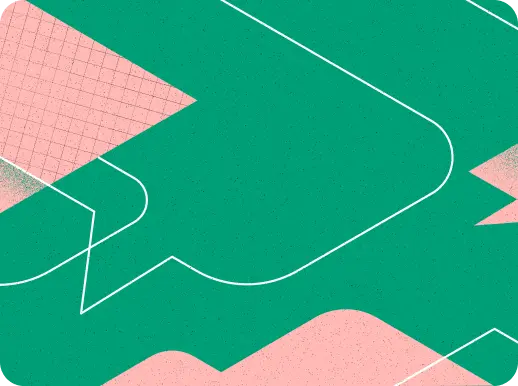When I was a junior-level designer, I had been wondering how to advance in my career. Reflecting on my earlier way of working, I have come up with ten signs which indicate that I am getting more senior. This article might help the designers who are trying to improve but are uncertain what to do.

1. Don’t only do what you are asked to do, but understand why you have to do it.

 My supervisor once said, “when you grow more senior, you have to choose projects where you feel you can grow.” It is a valuable quote to me. Like many other very kind designers, I don’t want to turn people down by saying “no”. Thus, I have in the past accepted projects that I don’t feel particularly enthusiastic about. However, saying no is a very critical skill to have. Especially when someone asks you to build up some features instead of solving a problem, it is a sign that it might not be an enjoyable or impactful project to take on.
My supervisor once said, “when you grow more senior, you have to choose projects where you feel you can grow.” It is a valuable quote to me. Like many other very kind designers, I don’t want to turn people down by saying “no”. Thus, I have in the past accepted projects that I don’t feel particularly enthusiastic about. However, saying no is a very critical skill to have. Especially when someone asks you to build up some features instead of solving a problem, it is a sign that it might not be an enjoyable or impactful project to take on.
2. It is not only about the design; it is a people business.
 It is essential to understand and weigh the wishes of different stakeholders. When I was a junior designer, I only focused on completing my task. Now, I have learnt that building good relationships and understanding stakeholders’ wishes are crucial. A project could fail if we forget to involve a key stakeholder at the beginning of the project.
It is essential to understand and weigh the wishes of different stakeholders. When I was a junior designer, I only focused on completing my task. Now, I have learnt that building good relationships and understanding stakeholders’ wishes are crucial. A project could fail if we forget to involve a key stakeholder at the beginning of the project.
3. Do the research and understand your users as much as possible before doing the actual design.
 When I was a junior, I had confidence that I could create any design from my imagination. However, it didn’t always work out. Later a friend recommended me a book called Steal Like an Artist. I realized then how important it is to get inspiration before starting.
When I was a junior, I had confidence that I could create any design from my imagination. However, it didn’t always work out. Later a friend recommended me a book called Steal Like an Artist. I realized then how important it is to get inspiration before starting.
Before starting a design, think about what feelings you want to bring to your users. For some designs, ease-of-use and clarity are the essential experiences, e.g. finding a product as soon as possible from a website. For others, a sense of safety and certainty is the key, e.g. payment-related design. Thus, we have to rethink each experience to create a user-centred design.
4. Gather empathy towards your users during your daily life.
 Almost any object and service we experience are designed by someone. When using them, our emotions help us to build a better connection with our users. As humans, we all experience similar frustration or happiness. Thus, as a designer, we can translate our experiences and emotions into the actual design.
Almost any object and service we experience are designed by someone. When using them, our emotions help us to build a better connection with our users. As humans, we all experience similar frustration or happiness. Thus, as a designer, we can translate our experiences and emotions into the actual design.
5. Be responsible for the content and understand it is part of the user experience.
 After participating in many user tests, I figured that many users value content writing a lot. I used to think visuals is the most important for the users. Now I understand if I want to improve the user experience, I have to take care of the copywriting because it is one of the most crucial pieces for a user’s journey.
After participating in many user tests, I figured that many users value content writing a lot. I used to think visuals is the most important for the users. Now I understand if I want to improve the user experience, I have to take care of the copywriting because it is one of the most crucial pieces for a user’s journey.
6. Try to push the best experience for all users as possible.

Accessibility is getting popular lately, partly because of regulation. It is not a mandatory skill for a designer to have, but understanding its basics is essential. For example, accessibility skills helped me to build empathy towards disabilities and the elderly. Also, with these skills, I can spot unreasonable designs before the implementation. Thus the developer doesn’t need to be concerned about the designs’ accessibility during the implementation phase.
7. Understand what the developer will need and give as much support as possible.
 Before handing over a design, we need to think about all the possible scenarios. Otherwise, there might be endless discussions among developers and designers. The not well-prepared design will slow down teamwork and create a lot of worries for the developers. Also, it is crucial to understand what the developers’ wishes and habits are. Some developers need all the design details, while others only want to have a few designs and enjoy interpreting the idea by themselves.
Before handing over a design, we need to think about all the possible scenarios. Otherwise, there might be endless discussions among developers and designers. The not well-prepared design will slow down teamwork and create a lot of worries for the developers. Also, it is crucial to understand what the developers’ wishes and habits are. Some developers need all the design details, while others only want to have a few designs and enjoy interpreting the idea by themselves.
8. Can understand and explain why a design decision is made.
 After reviewing a design, some developers will propose design changes to make the code easier to manage. Most of the time, it is not a big deal. But sometimes, it is crucial to keep the original design because it has a massive impact on the user experience. It is not easy to understand at the beginning which one can be changed. When you grow more senior, you will find that there will be more evidence to back up your decision. Some examples of the evidence can be “It is crucial information in this journey” or “We have millions of users using this feature.”
After reviewing a design, some developers will propose design changes to make the code easier to manage. Most of the time, it is not a big deal. But sometimes, it is crucial to keep the original design because it has a massive impact on the user experience. It is not easy to understand at the beginning which one can be changed. When you grow more senior, you will find that there will be more evidence to back up your decision. Some examples of the evidence can be “It is crucial information in this journey” or “We have millions of users using this feature.”
9. Able to communicate in a way that the audience would understand.
 It is not always easy to communicate the design in a way everyone would understand. Many designers have good hands-on skills but lack communication skills. For both stakeholders and designers, our shared goal is to solve users’ problems. Realizing that is the key to communicate with your stakeholders.
It is not always easy to communicate the design in a way everyone would understand. Many designers have good hands-on skills but lack communication skills. For both stakeholders and designers, our shared goal is to solve users’ problems. Realizing that is the key to communicate with your stakeholders.
10. Capable of staying positive while facing challenges.
 It is vital to keep a positive attitude while working on a project. One of my colleagues was in a pretty terrible situation on a project. For example, they discussed who should work during the weekend in their daily stand-up. Instead of getting frustrated, she said, “It is getting better, baby steps. And I am here to solve the problem; that is what I am hired for”. I appreciated her positive attitude in that situation. With that, I would like to end this entry with that piece of advice.
It is vital to keep a positive attitude while working on a project. One of my colleagues was in a pretty terrible situation on a project. For example, they discussed who should work during the weekend in their daily stand-up. Instead of getting frustrated, she said, “It is getting better, baby steps. And I am here to solve the problem; that is what I am hired for”. I appreciated her positive attitude in that situation. With that, I would like to end this entry with that piece of advice.
Let me know if you share the same experiences. Please share any feedback with me! Thank you for reading! 😁
Useful links
- Steal Like an Artist — the book helped me to learn how to do research and learn from good design. If you are interested, here is my summary of the book.
- I have learnt so much from this Kopywriting Kourse.
- Content Rookie is a pretty lovely Spotify podcast about content writing 😁
- Deque University is a great place to gain some accessibility knowledge.
- This is my other article, 5 practices that will help you become a senior designer. If you wish to get further in your career, this may be interesting.
Special thank you to my friend Jenny and Jas for the grammatical suggestions 😁 You are the best! ❤️
Originally published on lishadai.medium.com and picked up by Bootcamp UX.
Looking to find a home in tech design? Check out our open positions.
 Lisha DaiDesigner & Storyteller
Lisha DaiDesigner & Storyteller


